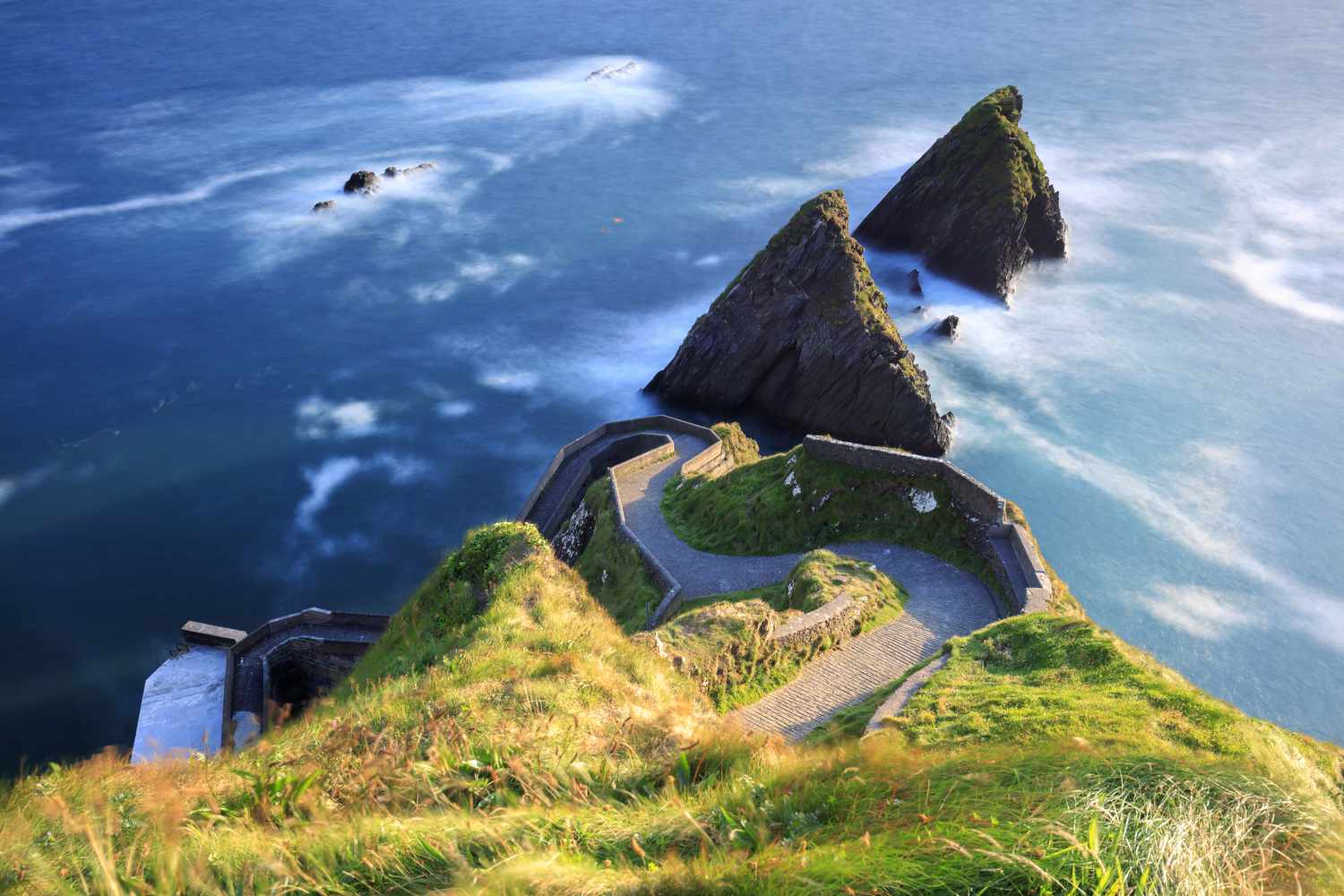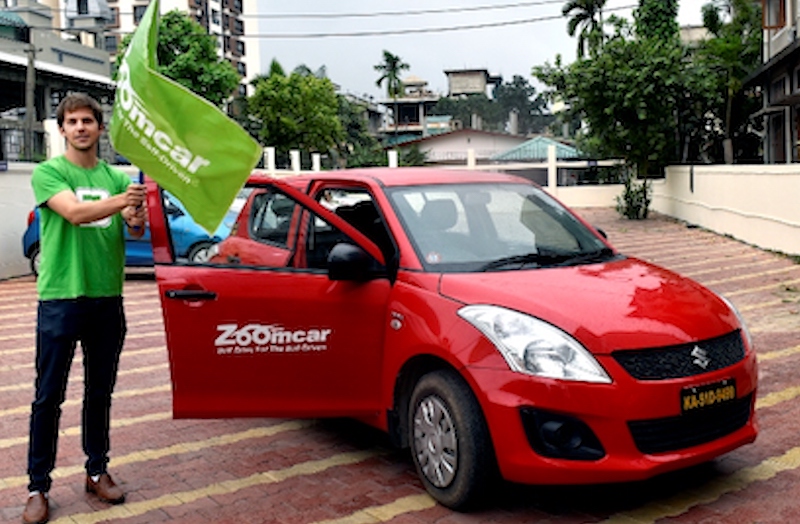The Wild Atlantic Way is not just a road trip—it’s one of Europe’s most extraordinary coastal adventures. Stretching over 2,500 kilometers along Ireland’s rugged west coast, this dramatic route offers everything from towering sea cliffs and ancient ruins to peaceful fishing villages and windswept beaches.
Whether you’re planning a scenic escape, a cultural deep dive, or a photographer’s dream tour, this guide to the Wild Atlantic Way will help you plan a journey that’s rich in beauty, history, and unforgettable experiences.
What Is the Wild Atlantic Way?
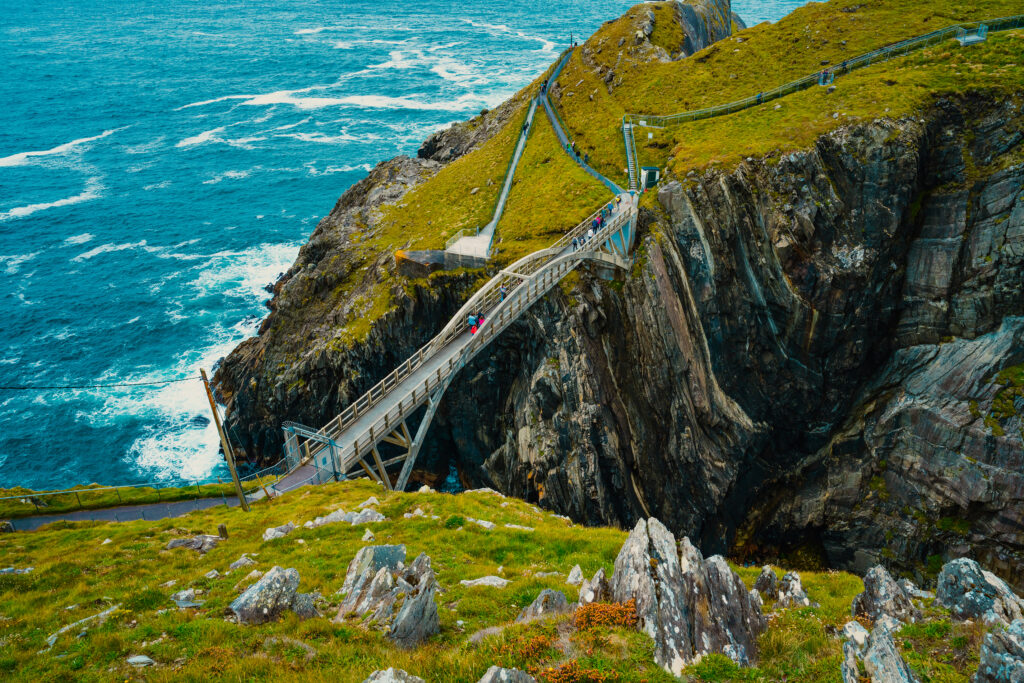
The Wild Atlantic Way is Ireland’s longest designated driving route and one of the longest coastal touring routes in the world. It begins in Kinsale, County Cork, in the south and travels up the west coast to Malin Head in County Donegal, the northernmost point of mainland Ireland.
Spanning nine counties, this iconic route offers over 1,000 attractions, 150 signature discovery points, and dozens of charming towns and villages where Irish traditions are alive and thriving.
The route is well signposted with a distinctive wave symbol, making it easy to navigate. Along the way, you’ll experience a powerful combination of natural wonders, cultural heritage, and local warmth.
Best Places to Visit on the Wild Atlantic Way
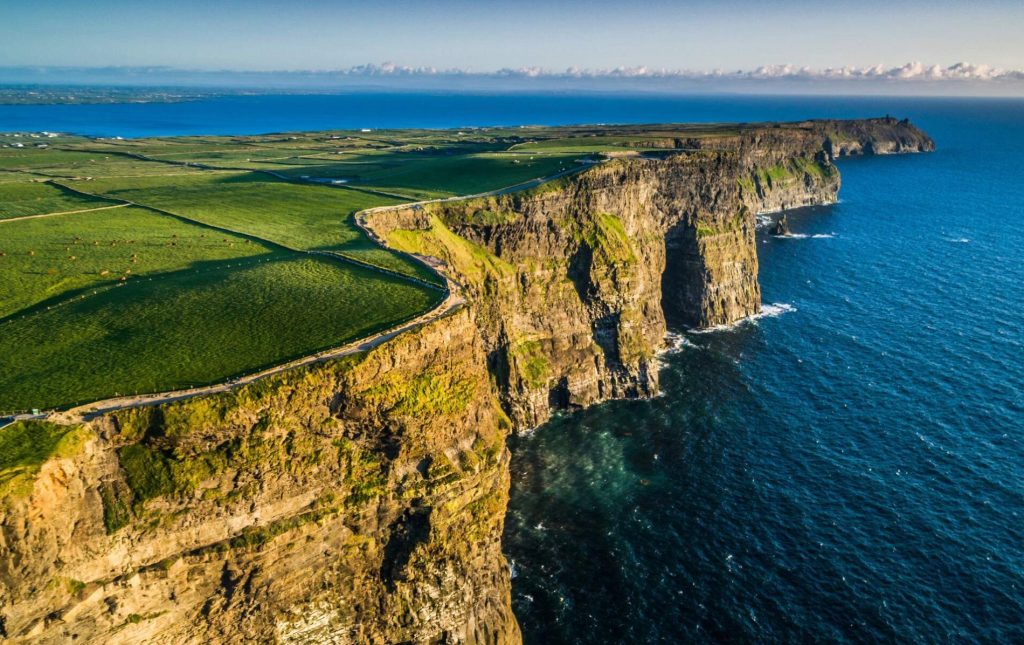
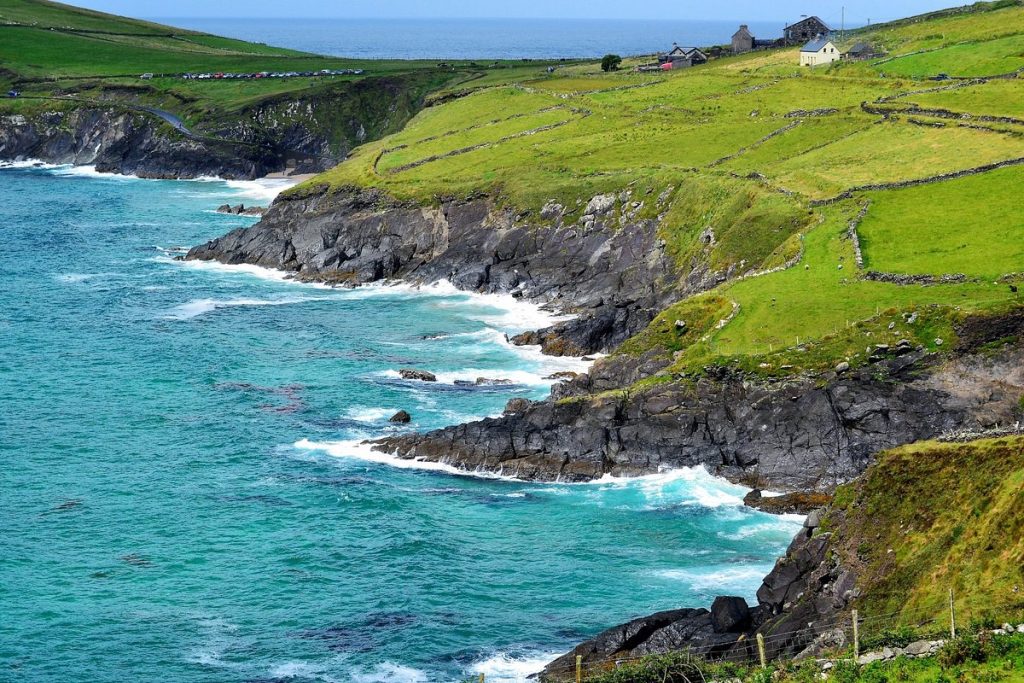
Cliffs of Moher (County Clare)
One of the most famous landmarks in Ireland, the Cliffs of Moher rise 214 meters above the Atlantic and offer sweeping views that stretch as far as the Aran Islands on clear days. There are safe walking paths and a modern visitor center with educational displays.
What makes this spot unique is the raw power of the Atlantic crashing against the cliffs—a dramatic, ever-changing spectacle. Sunrise or sunset visits here are especially breathtaking.
Dingle Peninsula (County Kerry)
The Dingle Peninsula combines history, language, and natural beauty. It’s part of the Gaeltacht, where Irish is still the primary language. The Slea Head Drive around the peninsula is packed with postcard views: dramatic headlands, ancient beehive huts, and sparkling beaches.
In Dingle town, you’ll find great food, colorful shopfronts, and live traditional music. This area also offers dolphin-watching tours and scenic hill walks.
Achill Island (County Mayo)
Accessible via a bridge, Achill Island is famous for its wild terrain, cliff-top roads, and tranquil beaches like Keem Bay, a horseshoe-shaped cove with crystal-clear waters.
Outdoor lovers can hike, cycle, or surf, while history buffs can explore the haunting Deserted Village at Slievemore. Despite its beauty, Achill remains relatively quiet, perfect for peaceful reflection and nature photography.
Slieve League Cliffs (County Donegal)
Less touristy than the Cliffs of Moher, Slieve League Cliffs soar almost three times higher at 601 meters. The views are spectacular and unspoiled, with well-maintained trails that reward hikers with panoramic ocean vistas.
Nearby Glencolmcille is a quiet village rich in folklore and traditional music—perfect for immersing yourself in authentic Irish culture.
Connemara (County Galway)
The Connemara region is a land of rugged beauty, where mountains meet bogland and lakes. Drive the Sky Road near Clifden for sweeping sea views, or hike through Connemara National Park.
The region is dotted with whitewashed cottages, Gaelic-speaking communities, and sheep farms, making it a wonderful place to explore Ireland’s rural soul.
When Is the Best Time to Drive the Wild Atlantic Way?
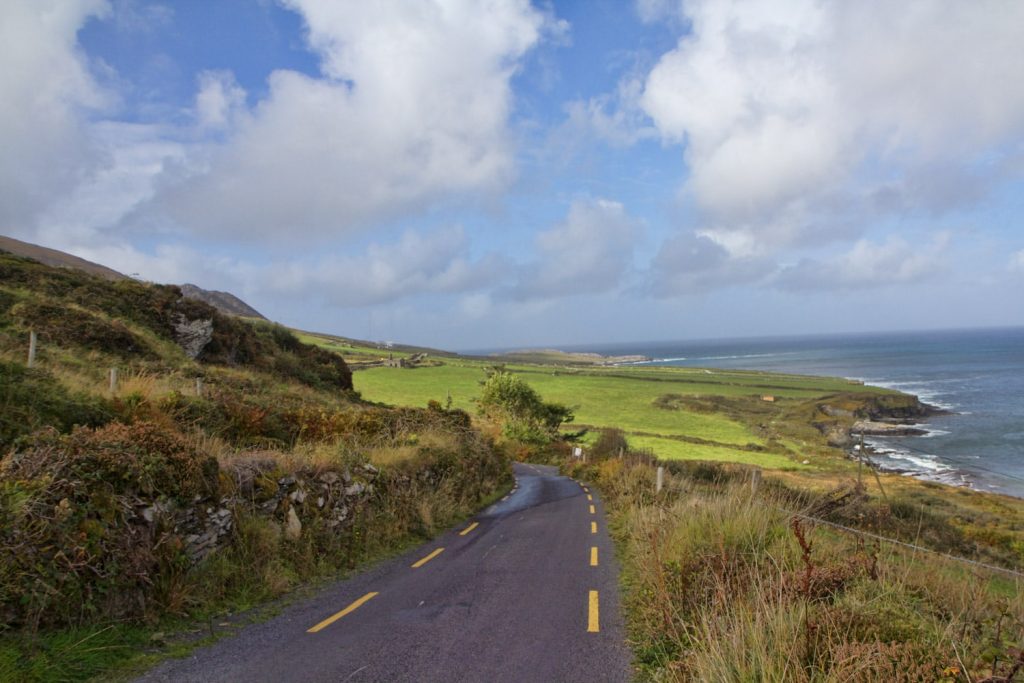
The Wild Atlantic Way is open year-round, but the best time to explore it is May through September. These months offer:
- Longer daylight hours (ideal for scenic drives and hikes)
- Milder weather with temperatures ranging from 15–20°C
- Open tourist services, such as boat tours, local markets, and seasonal eateries
That said, visiting in spring (April) or autumn (October) can mean fewer crowds and more peaceful experiences—just be prepared for occasional rain and cooler temperatures.
How to Travel the Wild Atlantic Way
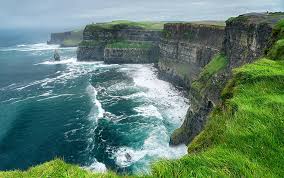
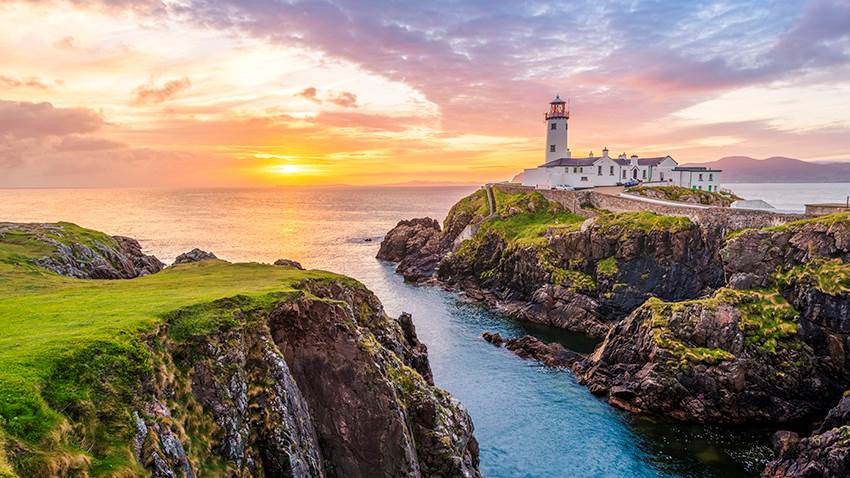
Self-Driving
Most visitors choose to rent a car and drive the Wild Atlantic Way themselves. This gives you flexibility and lets you explore lesser-known areas.
Tips:
- Choose a compact vehicle for narrow country roads.
- Use offline maps or download the official Wild Atlantic Way app.
- Book accommodation in advance, especially in summer.
Guided Tours
If you prefer a stress-free experience, there are multi-day guided tours that cover major stops. These are great for solo travelers or those uncomfortable driving on Ireland’s narrow roads.
Activities and Adventures Along the Route
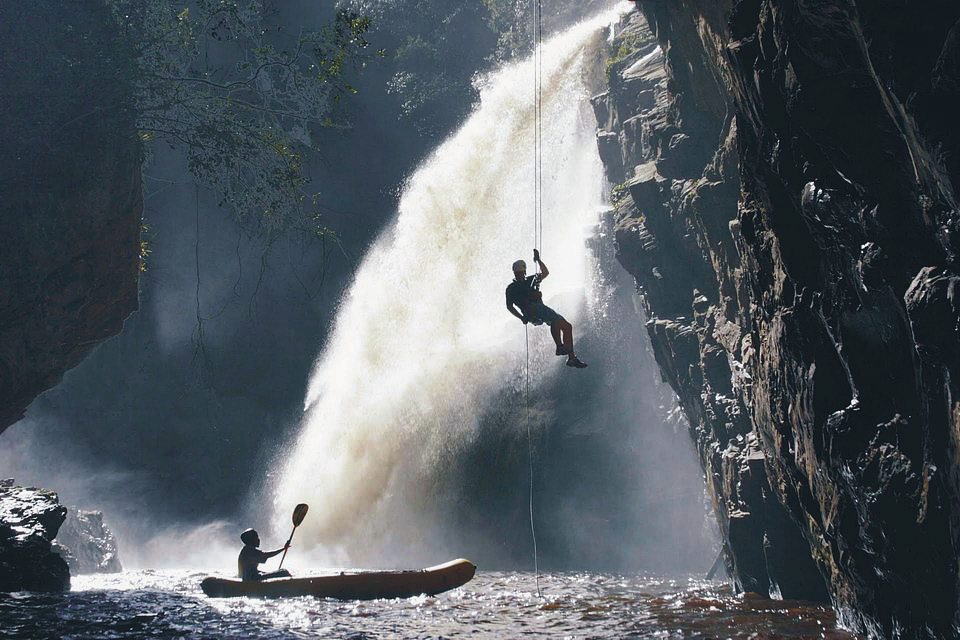
The Wild Atlantic Way isn’t just about driving—it’s packed with experiences:
Surfing
Ireland’s west coast is known for its powerful Atlantic swells. Popular surf spots include:
- Lahinch (County Clare)
- Bundoran (County Donegal)
- Easkey (County Sligo)
Island Hopping
- Several remote islands can be visited via ferry or air:
- Aran Islands – Known for stone forts and a strong Irish-speaking community
- Dursey Island – Accessible by Ireland’s only cable car
- Inishturk – Quiet, untouched, and great for walkers
Whale and Dolphin Watching
Take a boat tour from Dingle or Baltimore and spot dolphins, minke whales, basking sharks, and seabirds in their natural environment.
Hiking and Walking Trails
Some of Ireland’s best hikes lie along the route:
- Croagh Patrick (County Mayo) – A sacred pilgrimage mountain
- The Burren Way (County Clare) – Through unique limestone terrain
- Beara Way (County Cork) – A remote and rugged coastal walk
Food and Local Culture

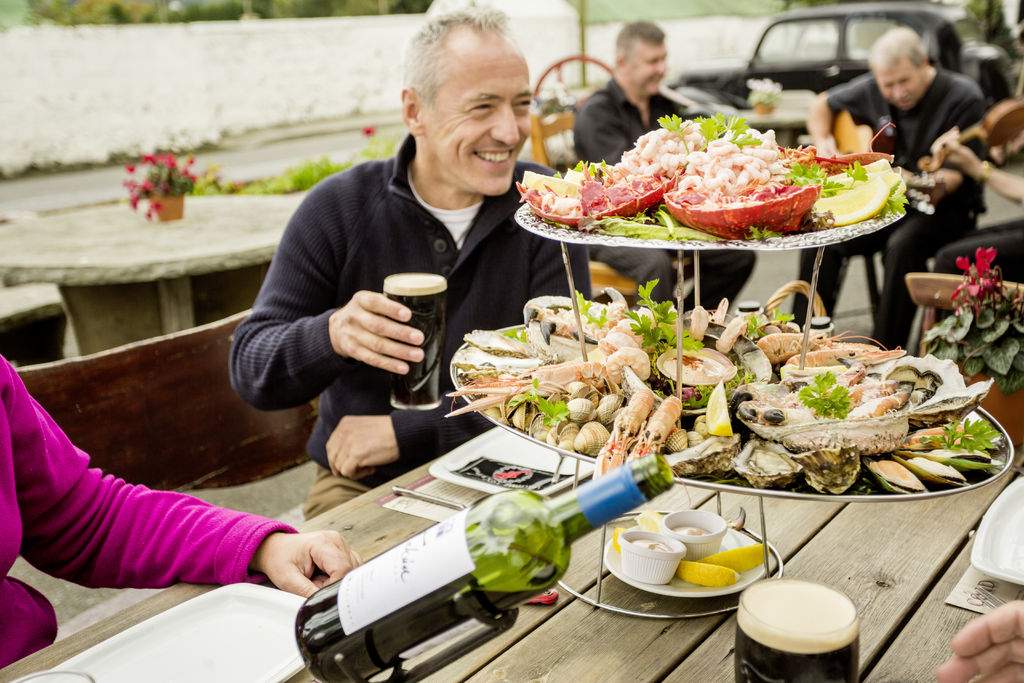
One of the best parts of this journey is sampling local cuisine and traditional Irish hospitality.
- Try fresh seafood in coastal towns like Kinsale or Dingle—especially mussels, oysters, and smoked salmon.
- Stop at local farmers’ markets in towns like Galway or Westport.
- Spend an evening in a traditional pub, where live music, storytelling, and friendly locals make for a memorable night.
Suggested Itinerary for a 7-Day Trip
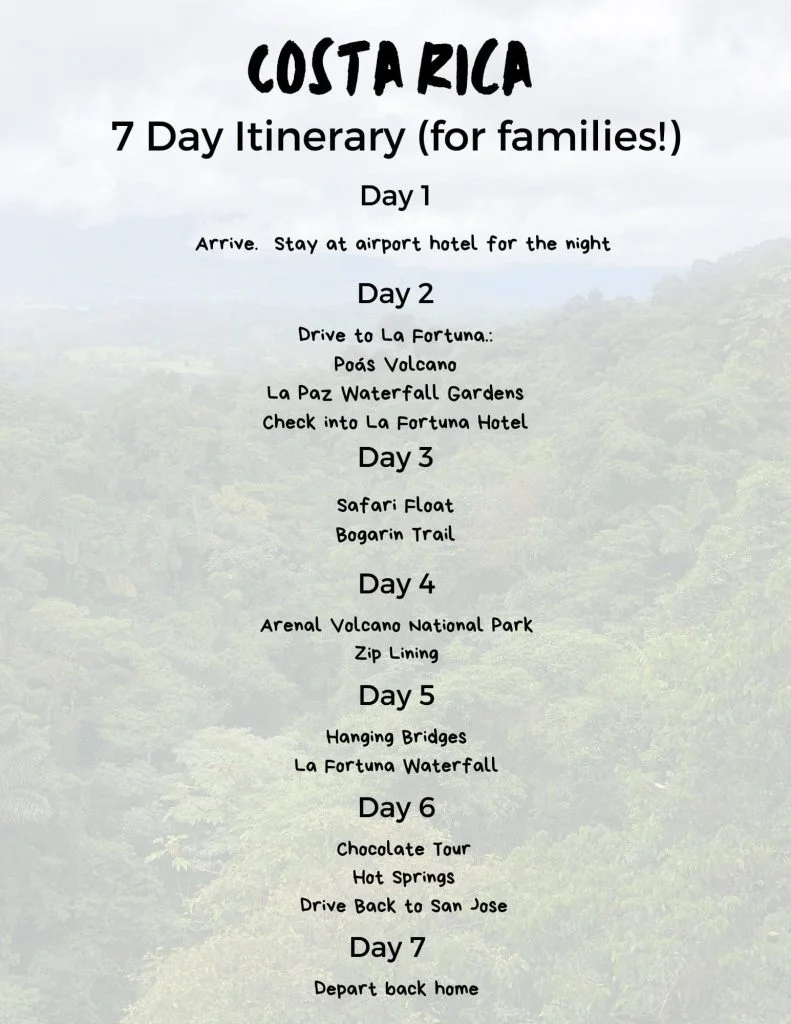
If you have limited time, here’s a quick 7-day itinerary covering key areas:
- Day 1: Kinsale to Kenmare (Southern Peninsulas)
- Day 2: Kenmare to Dingle (Ring of Kerry & Slea Head Drive)
- Day 3: Dingle to Doolin (via Cliffs of Moher)
- Day 4: Doolin to Galway (The Burren and Connemara)
- Day 5: Galway to Westport (Explore Achill Island)
- Day 6: Westport to Sligo (Beaches and mountain hikes)
- Day 7: Sligo to Donegal (Ending at Slieve League)
This route includes dramatic scenery, heritage sites, lively towns, and peaceful escapes—all within one week.
Final Thoughts: Why You Should Drive the Wild Atlantic Way
The Wild Atlantic Way is Ireland at its most authentic and awe-inspiring. With every bend in the road, you’re treated to a new landscape, a new story, and a new moment of wonder. Whether you’re following the whole route or exploring a section at a time, it promises a once-in-a-lifetime experience filled with nature, history, and heartfelt welcomes.
So grab a map, pack your camera, and set off on a journey you’ll never forget—Ireland’s Wild Atlantic Way is calling.

